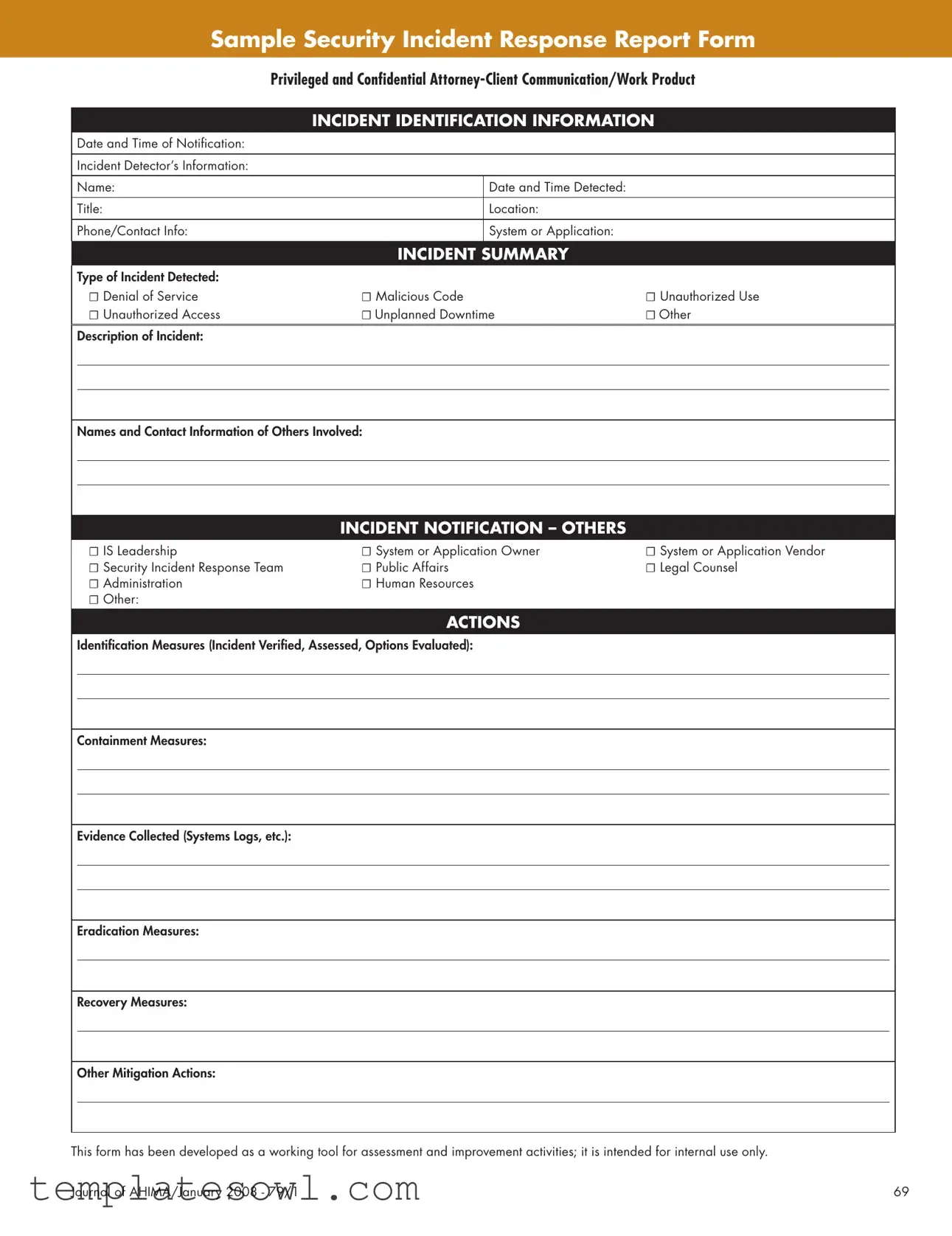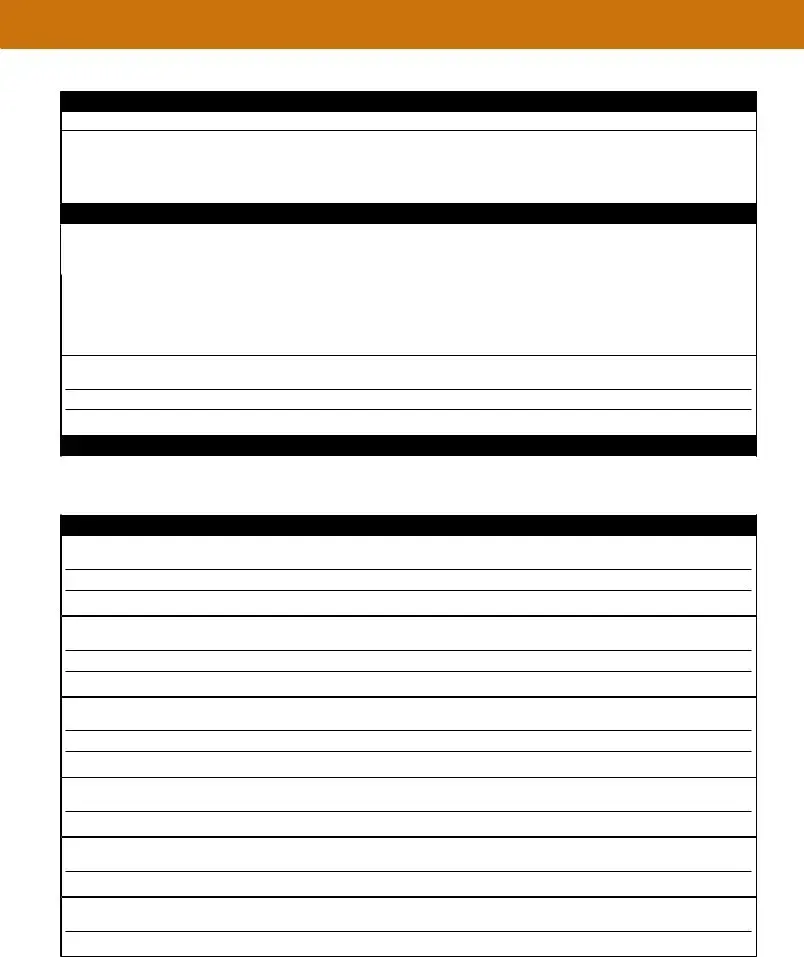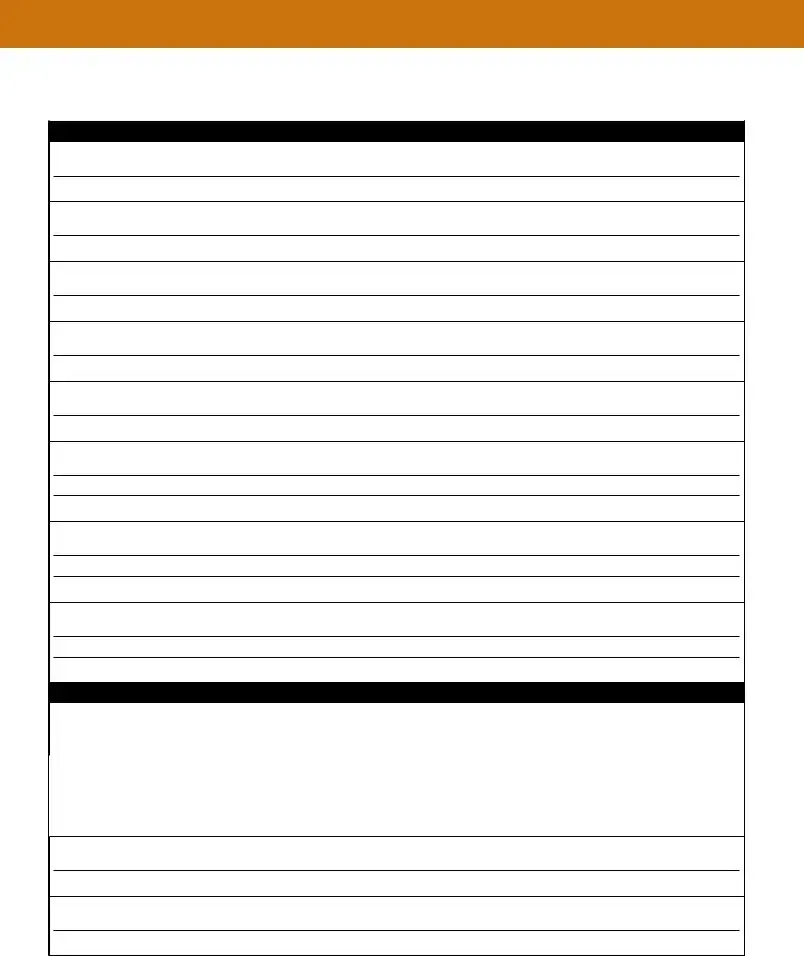What is the purpose of the Sample Security Incident Report form?
The Sample Security Incident Report form serves as a structured tool to help organizations document and analyze security incidents. By collecting detailed information during an incident, it aids in improving response efforts and fostering a culture of security awareness.
Who needs to fill out this form?
This form should be completed by individuals who detect an incident, often in the IT or security teams. It may also involve collaboration with other relevant stakeholders such as system owners, legal counsel, and the security incident response team.
What types of incidents can be reported using this form?
The form is designed to report various types of incidents, including denial of service attacks, malicious code infections, unauthorized access, and unplanned downtimes. It can also cover other security-related issues, ensuring a comprehensive approach to incident management.
What information is needed to complete the form?
To fill out the form effectively, you will need details such as the date and time of notification, the incident type, a description of the incident, and the names and contact information of those involved. Collecting this information is crucial for accurate incident management.
What actions should be documented in the report?
The report should include identification measures, containment actions taken, evidence collected, eradication measures, and recovery efforts. Documenting these actions provides a clear picture of the response and helps identify areas for improvement.
How is the follow-up process handled?
After the initial report is created, it should be reviewed by designated individuals, such as the security officer or the privacy officer. Follow-up actions should also be documented, ensuring that any recommended improvements are clearly outlined and implemented.
Is the information in the report kept confidential?
Yes, the Sample Security Incident Report form is intended for internal use only and includes privileged and confidential information. Organizations should enforce strict access controls to protect sensitive data contained within the reports.
What should organizations do with the findings from this report?
Organizations should analyze the completed incident reports to identify patterns, assess response effectiveness, and implement corrective actions. Regularly reviewing findings helps bolster security measures and prevents similar incidents in the future.


